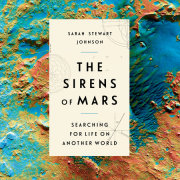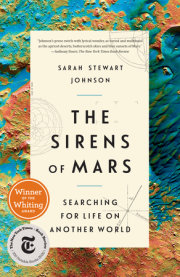In July of 1965, as a tiny octagonal spacecraft swooped across the Martian surface, my father, who had just turned eighteen, was standing tall on a humid, hardwood-forested hill in Appalachia. There on the edge of Viper, Kentucky—below a hundred kilometers of nitrogen and oxygen, under the Kármán line, the exosphere, and the Van Allen belt, beneath the great, vast vacuum of space—a small natural-gas company had sent a bulldozer up a holler and had set about carving out a flat spot for drilling. On the days my father managed to drive the old jeep through the creek bed without flooding the engine, he joined an overalls-clad, illiterate crew in digging ditches and laying pipe, occasionally carrying the casing for the drill head. He’d hoped to spend the summer as a fledgling assistant to the company geologist, but within two weeks, every available worker had been sent to the hillside.
The news about the world’s first Mars mission, Mariner 4, came by way of The Courier-Journal, the newspaper out of Louisville. It arrived on a truck that twisted along the deeply gouged mountain roads, passed the coal camps, passed Hazard High School, and made its way into the small downtown, which was bound like a bobby pin by the North Fork of the Kentucky River.
That morning, my grandfather had picked up the newspaper from Fouts Drug. He’d tucked it under his arm on his way to work at the health department. As a medical technician, he inspected the Cold War–era bomb shelters that dotted the mountain ridges to make sure the food stocks were safe and drew blood to test for syphilis before young couples got married. He took pride in the fact that everyone in town called him “Doc.” He wasn’t a doctor, but he did give penicillin shots throughout the hills of eastern Kentucky: down in Gilly, up in Typo, in Slemp and Scuddy, in Happy, Yeaddiss, and Busy. When my grandmother wasn’t giving perms, she would help out. She liked running the X-ray machine.
It was still muggy later that evening as my grandfather meandered up Broadway—a street that was anything but broad, a single paved lane that fell steeply into backyards teeming with kudzu. He walked into a house that hung like a bat to the side of the ravine, leaving The Courier-Journal in the attic bedroom, which was spacious now that four of the six kids had left home. His lanky, wide-eared child, his youngest son, would also leave at the end of the summer, heading two hours west across the steep forested slopes to attend Berea College. My grandfather put the paper on the quilt where my father was sure to find it, next to his Popular Science magazine, right beneath a poster of the pockmarked moon.
My father had been rapt by the idea of the mission, NASA’s chance to photograph the planet most similar to Earth. As the mountain town rotated into darkness that Wednesday, my father climbed the steps, aching and exhausted, and he saw the headline. Above the fold, between a picture of Willie Mays and an article on Vietnam, was what he’d been waiting for: mankind, through mariner, reaching for mars today. He smiled and fell into bed as he read. “Today the fingertip of mankind reaches out 134 million miles to Mars, almost touching the only other body in the solar system widely suspected of harboring life . . .”
On the other side of the country, in a canyon north of Pasadena, an eager crowd had gathered on the campus of NASA’s Jet Propulsion Laboratory. Inside JPL’s von Kármán auditorium, intertwined cables, thick and vaguely subterranean, unfurled from a cluster of television cameras and snaked across the floor to the vans outside. Radio from all over the world was hooked in by relay, and the Brits were poised to broadcast a live television feed, having leased a full two minutes of time from the “Early Bird” satellite. There were thirty-seven phones in varying states of use: thirty-six within the press bank, and one sitting atop a desk as part of a small fake office where the TV broadcasters could be filmed.
From floor to ceiling, dominating one side of the great room, was a full-scale spacecraft, one of the flight-ready spares that had been used for temperature-control testing. It had the same octagonal magnesium frame as Mariner 4, the same 260 kilograms of hardware and instrumentation. There were 138,000 parts in all: aluminum tubes, attitude-control jets, pyro end cabling. The solar panels, including flaps at the end, stretched seven meters. Coated with sapphire glass, glistening in the beams of the television lights, they looked like the wings of a jeweled pterodactyl.
Much depended on this craft. In a scene that played out repeatedly over the course of the twentieth century, a Soviet spacecraft was approaching Mars at the same time. It had launched from the Baikonur Cosmodrome just two days after Mariner 4. It had reached Mars, but, much to NASA’s delight, it wouldn’t be returning any data. Halfway there, irregular updates had started coming from its communications systems, and then the transmitter died. It was now no more than “the voiceless ‘Russian spy,’ ” “The ‘Dead’ Soviet Mars missile.” At long last, the United States had a chance to pull ahead in the Space Race.
There was only one hurdle standing in the way of American triumph: Mariner 4 had to aim and actuate the camera and successfully transmit its images back to Earth. This was no easy feat. Mars was so far from the sun that the mission only had 310 watts of usable power, the equivalent of a couple of lightbulbs. The power available to send the data stream would be a mere ten watts to start, which would dissipate to a tenth of a billionth of a billionth of a watt by the time it was captured in the great dishes of the Deep Space Network, the newly built antennas on the outskirts of Johannesburg and Canberra, and deep in the Mojave Desert. And even if the data arrived, there were worries. What if the pictures snapped a bit too early, or a bit too late? What if the spacecraft inadvertently twisted away from the planet at just the wrong moment? What if the camera failed to shut off, recording over the photographs of Mars with pointless photographs of empty space?
The Soviets had been trying to reach Mars for five years. In space exploration as in all things, they were a formidable adversary. In 1960, their first pair of missions had coincided with Premier Nikita Khrushchev’s visit to the United Nations General Assembly in New York. He’d commissioned models of the Mars probes and brought them along to show the world. Less than two months earlier, his lead rocket engineer had launched into space the first sentient beings that returned safely to Earth: two dogs, a gray rabbit, forty mice, two rats, and several flies.
But the Soviets were not so lucky this time. As the delegates assembled in New York, the first rocket to Mars failed, climbing just 120 kilometers before falling back to Earth and crashing in eastern Siberia. Then the second rocket failed: A cryogenic leak had frozen the kerosene fuel in the engine inlet. Khrushchev had been relying on another splendid performance from his ambitious young space program and was furious as he paced the halls of the U.N. Before the plenary meeting came to a close, he supposedly went so far as to pull off his shoe, enraged, and brandish it angrily at another country’s delegate.
The Soviets tried again with a trio of missions in 1962. The first ruptured in orbit, fanning out debris that was detected by a U.S. radar installation in Alaska. It was nine days into the Cuban Missile Crisis, and the wreckage was momentarily feared by Air Defense Command to be the start of a Soviet nuclear attack. The third also exploded, the main hull of the booster reentering the atmosphere on Christmas Day, followed a month later by the payload. The second, however, traveled 100 million kilometers away from Earth and went on to make the first flyby of Mars—though it was a mute witness to the event, as its transmitter failed, the same thing that happened two years later.
The Soviets kept their defeats to themselves and trumpeted their successes—which were numerous enough to show that they had a decided lead over the Americans. They had reached practically every milestone in the Space Race: the first artificial satellite, the first animal in space, the first man, the first woman. They’d intentionally crashed a spacecraft into the moon and taken the first pictures of its far side, and they were now poised to claim the first spacewalk.
The United States, by contrast, had successfully completed only one planetary mission, Mariner 2 to Venus. Worse, the Venus mission, the “Mission of Seven Miracles,” had barely worked. It was a wonder that it had managed to collect any data at all, flying by the seat of its pants, “limping on one solar panel and heated to within an inch of its life.”
And getting to Venus was easier than getting to Mars. To reach the Red Planet, the spacecraft’s systems had to stay alive for an extra hundred days, and the data had to be transmitted twice as far. Transistors were new and bulky, and the microchip had just been invented. The computing power of the whole spacecraft was no better than that of a pocket calculator, yet the spacecraft had to rely on a never-before-tested star tracker to point the way. For the first time in history, a NASA probe was drifting into the darkness, traveling away from everything bright in the night—the Earth, the moon, the sun. Just like Coleridge’s ancient mariner, it was poised to be “the first that ever burst/Into that silent sea.”
Copyright © 2020 by Sarah Stewart Johnson. All rights reserved. No part of this excerpt may be reproduced or reprinted without permission in writing from the publisher.










